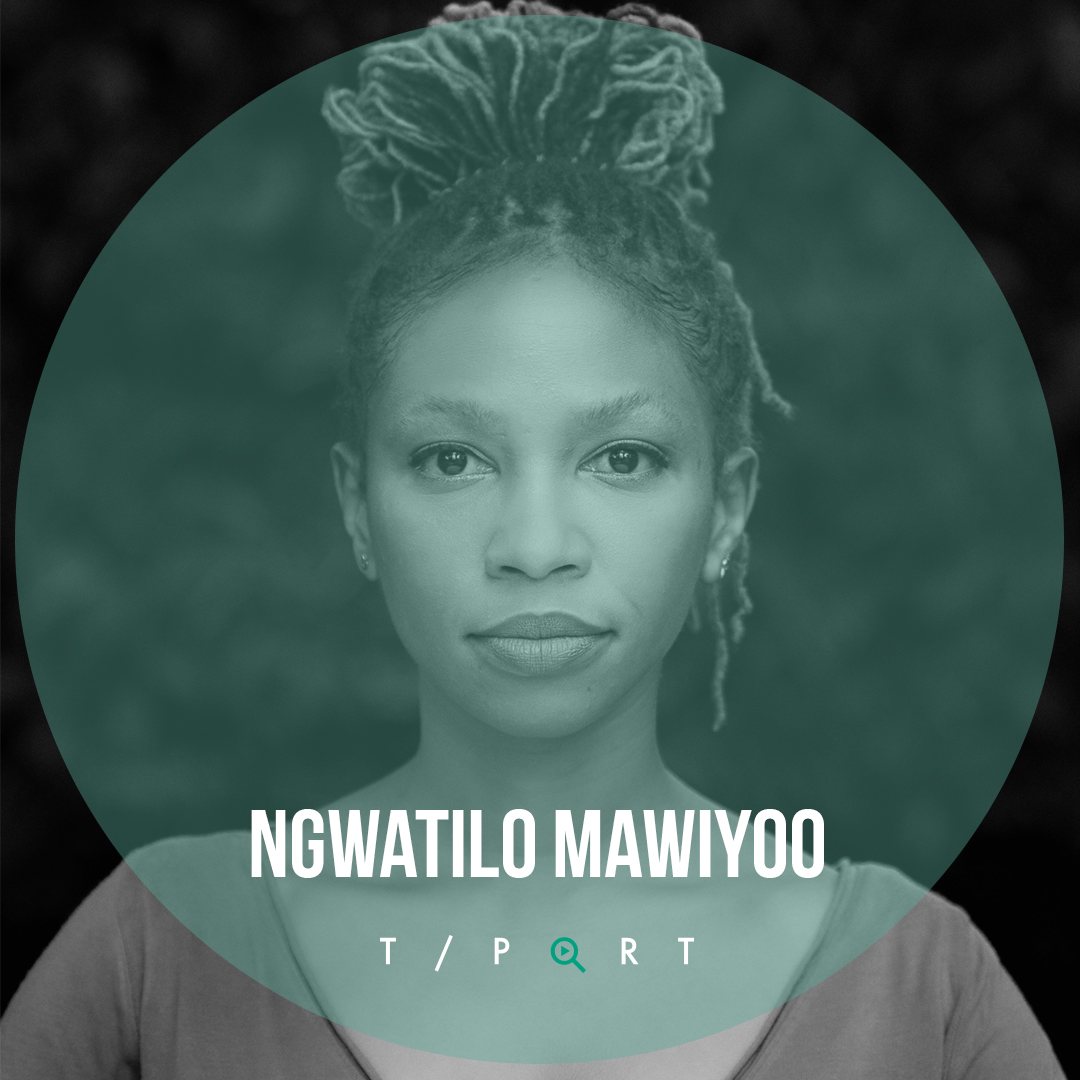
Ngwatilo Mawiyoo’s short film, “Joy’s Garden”, was just recently released, and is already gaining festival success, including an award at the Zanzibar International Film Festival, and 5 nominations in Kenya’s film awards. The film is a personal drama following Edwin, who abruptly goes from being an absent father to becoming the sole caregiver of Joy, his seven-year-old daughter, following her mother’s death. We recently got a chance to talk to Ngwatilo about the filmmaking process of her film, her future plans and ambitions, as well as the challenges and advantages of being an emerging female filmmaker in Kenya.
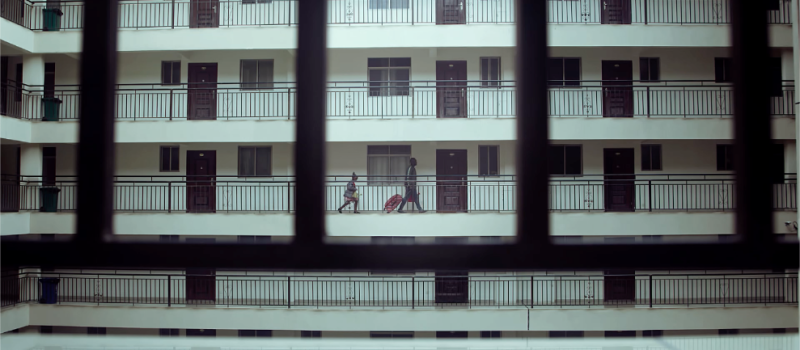
Hey Ngwatilo! Tell us about yourself.
I grew up in Nairobi and loved to be on stage as a child, singing and performing variously. In high school, I started to write, mostly as a hobby – which continued until college where I discovered poetry and creative non-fiction, as a way of seeing the world. Afterwards, I got into film as an actor and started to publish my poetry. I now have two small books under my belt, some work in translation, various award nominations, and the privilege of having travelled quite a bit around the world.
When I grew frustrated with some of the opportunities I was getting, I began to think writing could be a path I could access for possibilities greater than what my body could get cast in. Joy’s Garden is my debut film, one I actually started years ago while working on while earning my MFA in Creative Writing. It’s a film that’s taught me how to write, and later, how to direct and produce. It opened a world of possibilities and lessons. Since then I’ve written a second short film that I’m really excited about realising, which we’re currently fundraising for. I’m taking more of a back seat this time, and learning from the director and producer attached, observing how their experiences develop and alter the film. There are a few ideas I also want to develop for longer projects as well. One step at a time.
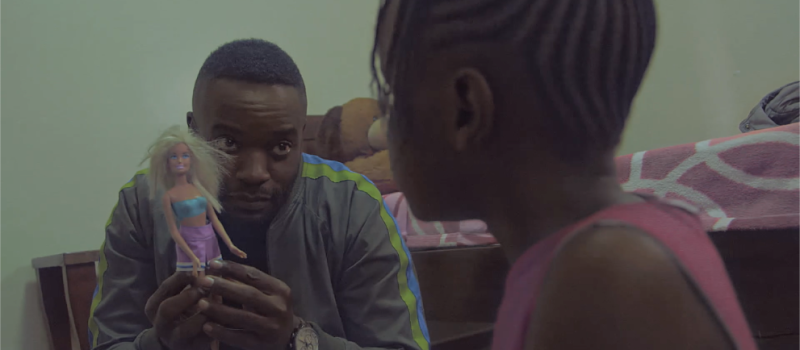
Tell us about a filmmaker that you admire and why?
As a filmmaker, one of the director’s who’s really impacted me is Ekwa Msangi. She was amazing with us as actors and has a gentleness about her that invited possibility. And she writes amazing characters. I also admire Toni Kamau, a young Kenyan producer whose two feature documentaries have rocked the world over the last two years. Her tenacity and clarity in her work are amazing and I admire how clear her boundaries are. When I grow up!
Outside of Kenya, I am definitely a Barry Jenkins fan. The heart that comes through, almost effortlessly, coupled with beauty in the movement, colour. I absolutely admire his relationship with Nicholas Britell. The two of them do such amazing work Individually and then together. I really can’t stand it. I’d love to have such a relationship, especially with a composer, since music is such an important part of how I experience the world.
Can you tell us about your first encounter with cinema – do you recall your first memory from watching a film?
I didn’t watch “The Sound of Music” in the Cinema, we had a VHS tape of it. Of course, the music was everything, but the romance of it, the fancifulness, I loved that so much, and still do. With my family, we had a sort of tradition of going to see the Bond movies in the cinema as often as we could (and covering our eyes in the kissing scenes!) We still try to keep it up.
Next to filmmaking, what do you consider as your passions in life?
Poetry, music, and now gardening (just like Joy, the girl in my film – life imitates art!)
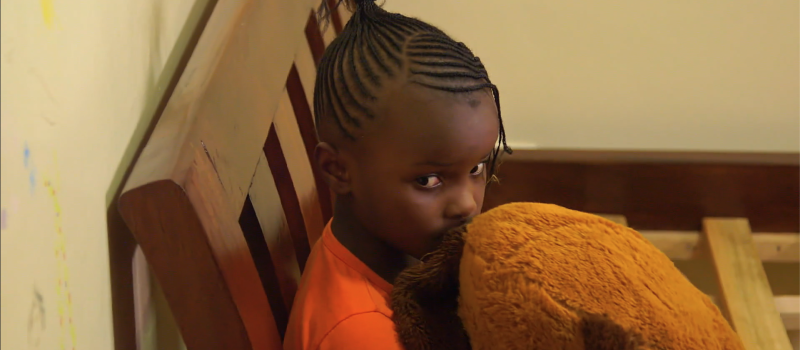
Do these passions influence your filmmaking, are there any connections?
Well, regarding gardening, I’ve always loved to know the names of plants and trees, but I didn’t tend to garden as much. After we shot Joy’s Garden, I kept some of the prop plants and they really turned me into a gardener, with a book and a lively propagation operation, the works! Then the pandemic made things way more intense!
I think poetry gives me the patience to reach for perfection in my scripts, minimise dialogue, really make it count. It’s definitely been an asset, but perhaps not very consciously. I’m still learning how to wield it.
I also just love how music works in films, and what it can do. So far I’m mainly learning on the job. One of the commitments I made even though it was really not in our budget was to have the experience of working with a composer to develop some original music.
I think in the next few films we’ll see what the influence of my passions has been. For the moment, I think the main theme is just to play. A commitment to experimenting, try things, see what sticks and becomes part of my practice as a filmmaker.
What is the best thing you recently watched?
I’m currently watching Apple TV’s “Foundation”. It’s amazing, but obviously so epic as to not really be relevant. All year I’ve been thinking alongside some of the themes in Jenkins’ “Underground Railroad”, really about my ancestors, and some of the stylistic approaches he used. I’m not sure how that will make its way into my work, but we’ll see.
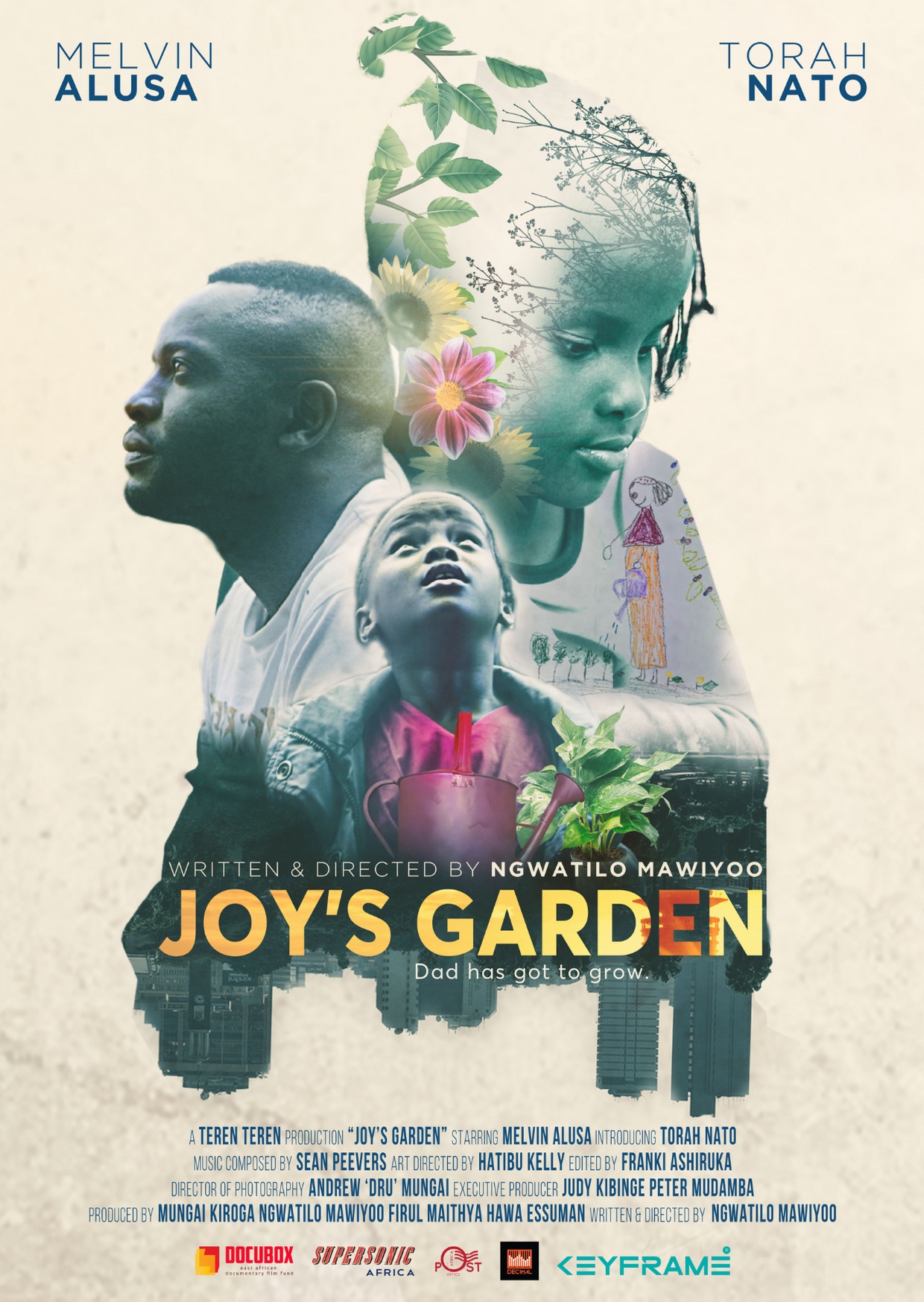
Which film do you find overrated, and why?
It’s really easy for me to suspend my disbelief, so if I can’t then something is up. But I really didn’t get Superbad. Like I just don’t get it. My husband loves it. I have no idea why this is good. Last time I tried to watch it and I didn’t get very far.
How did you first start working on this film? What was the process like and what first sparked the idea to make this film?
I started working on the film in graduate school, as part of a short film. It came out of almost nothing. I thought of the most ridiculous thing I could think of and it was a Nairobi middle-class dad working on a garden for his kid. Not directing anyone to work on it, but working on it himself. It was originally supposed to be in his parking spot, but that obviously didn’t remain. So I knew that had to be the end, and everything else has changed 100 times over since. But the promise of joy getting her garden has remained.
While working on the film, where did you draw your inspiration from?
I drew inspiration from Nairobi’s incessant housing developments; apartments that hardly let sunlight in, let alone make provision for the children who must in reside them. I drew inspiration from my friends who often find themselves their children’s only hope, while the men who fathered those children abandon them. I was inspired by the threat of that abandonment, which looms large no matter how happy a relationship is. I was inspired by the wonder of childhood, its innocence and fragile imagination, my own search to recapture its magic, to make possibility alive in my own life.
Tell us a bit about your film and the filmmaking process – what were your main insights?
There were so many insights. A big one was pretty basic: my instinct was to yell cut too early. I had to stop that. The issue of safety on set was also key. In our story we needed a prop glass to break and we also had a child actor on set with all this broken glass. We had to do it carefully and make sure we have no injuries. Working with child actors in general: I had been warned but it was already too late. You really just have to work with their energy and give them as many breaks and snacks as needed.
I learned so much about costume, some of it painfully in post. Also, it’s not that easy to break a whisky glass. Planning is so absolutely essential. Next time I’d want to work from a shot list. Patience is essential.
What were the biggest challenges you encountered during making your film?
Well, we had a tiny budget to start with. That was the first thing. While shooting we basically got kicked out of one location and had to improvise with another and steal shots we could to make it all cut together. And of course, we were perennially running out of time. But the biggest challenge was I really didn’t know what I didn’t know. Hiring a fantastic team was the main smart thing I did.
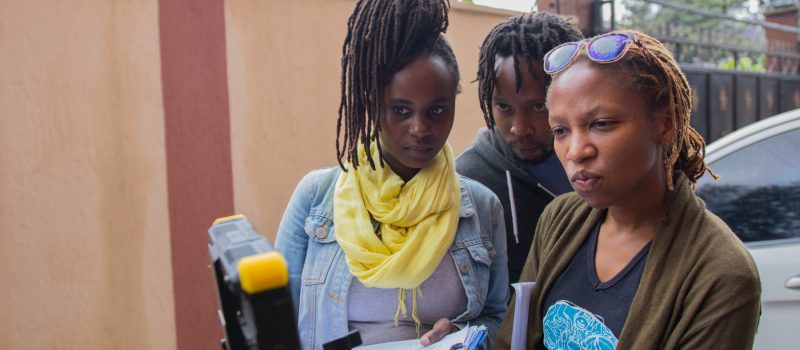
Tell us about the sound choices in your film – what type of score did you use and why? What other types of sounds did you use (if any)?
I was really grateful for the opportunity to work with Sean Peevers at Supersonic Africa. Mine was really an experience of learning while doing, and all that in the pandemic, when working together remotely was still so new. One of the key choices he made was to use bells to connect the music to the fancifulness of the character Joy, and her way of seeing the world. We hadn’t discussed that before but I really like what it brought to the music. The film definitely leans heavily on music towards the end of the film, when the emotions are really front and centre and the characters are moving. I loved the use of voice in those bits especially.
Tell us about the visual choices in your film. What were your main goals and techniques in creating the visual style of your film?
The main goal was to establish Edwin – the father character’s home, as being alien and unwelcoming. We tried to use colour to also show her mental state when she arrived, using lots of blues in the grading, which warm up as she gets closer to meeting her objective, and critically, becomes more comfortable with Edwin.
If you had to summarize your film in three words, what would they be?
fatherhood, grief, imagination.
What would you like people to take away from your film?
There are two critical things I’d like people to take away:
1) That fathers can play a critical role in the lives of their children. It doesn’t have to be mediated by the mother. But fathers have to actively choose to play that role and build that relationship.
2) Children’s imagination should be protected. It enables them to create the present and future they want, provides them with autonomy that can be powerful to exercise. It may not always make sense to us as adults, but we should never stifle it. We might even find that their way of seeing the world is something we, as adults, need.
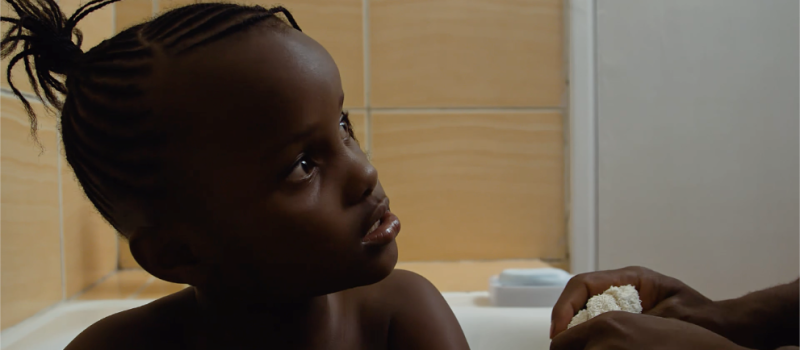
Did you have a specific strategy for promoting your film? If so, please tell us about it.
Not really, to be very honest. I’ve been blundering along, discovering what I didn’t know, losing confidence, finding it, seeking and taking advice and pushing forward. I really can’t overstate how much of a learning process every stage of making and promoting this film has been. Interacting with festival curators and different audiences has been invaluable. Hearing their responses and descriptions of the film has at various times provided the language and perspective that I didn’t know I was missing or had lost, being so caught up in the minutiae of making it, and also caught up in my own lens into it.
What did you find (or still find) as especially lacking in the process of distributing and promoting your film? What was especially challenging?
Money is a major challenge. Opportunities to connect with audiences are also scarce in these pandemic times. One finds they are marketing from afar and not able to really engage audiences or gauge their response. Access to markets is also a huge challenge. Kenya is a young and growing industry though, so things are a lot better than they have been. I didn’t go to film school so building a network perhaps has been a different experience for me, relative to people who came up with a particular cohort that is building particular skillsets.
What are your expectations from T-Port? Did T-Port already help your film in any way?
I’m really grateful for this opportunity here and looking forward to seeing what response the platform will generate for my film.
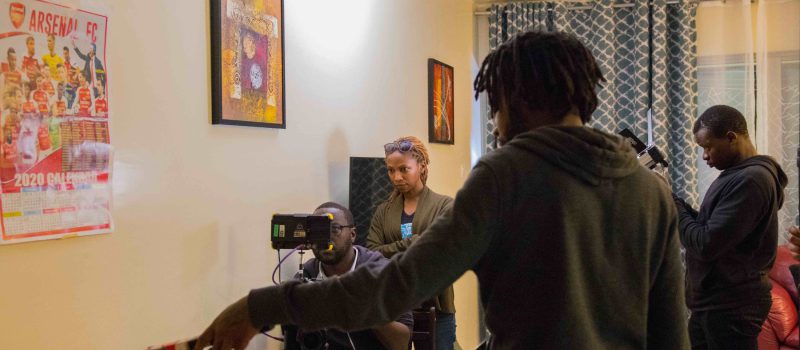
What are your plans and dreams for the future?
Make more work! I’m definitely keen to build on my momentum thus far. I’d like to make more work that’s grounded in joy, and the realities of being alive today. I love these places of contradiction.
Is there anything else you would like to mention?
We’ve just received 5 nominations in Kenya’s film awards. We’ve been nominated for best screenplay, best director, best short film, best editor, and best production design. We’re really thrilled about this recognition!

Follow Ngwatilo on social media!
ngwatilo.com/joys-garden-film, @ngwatilo: facebook, IG, Twitter. @joysgardenfilm on twitter.
Back to T-Port Blog
